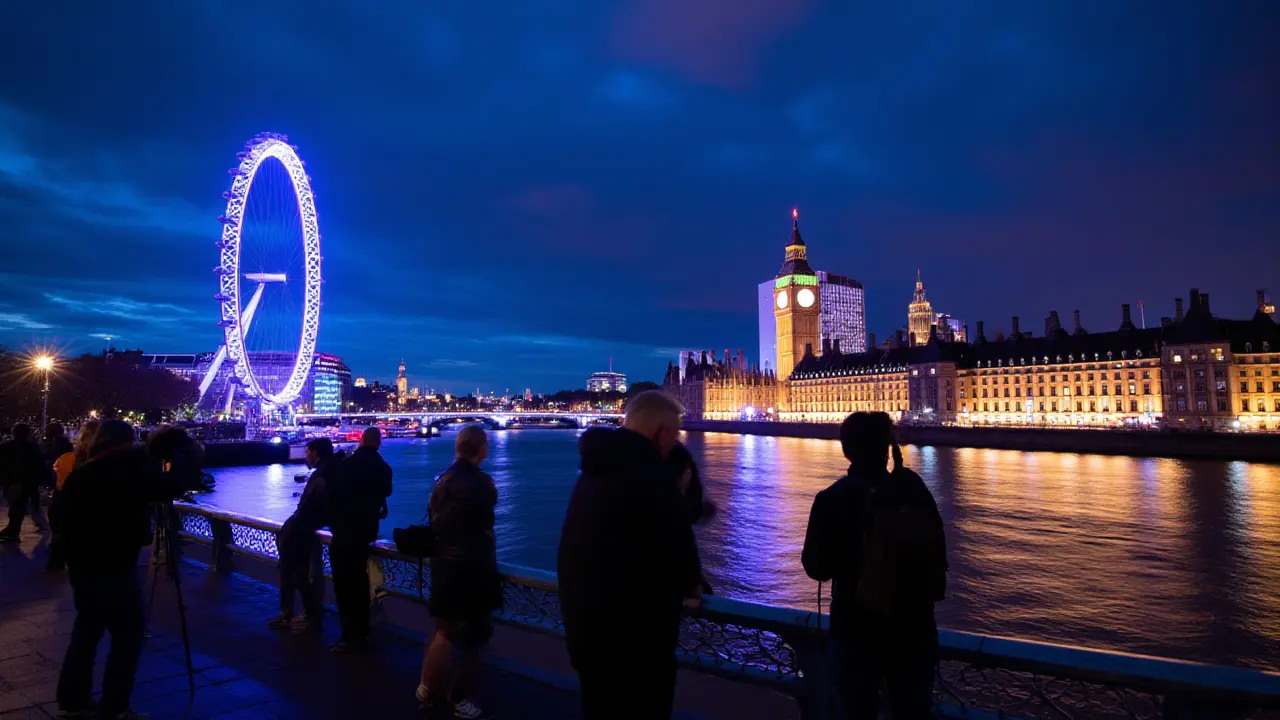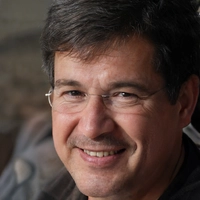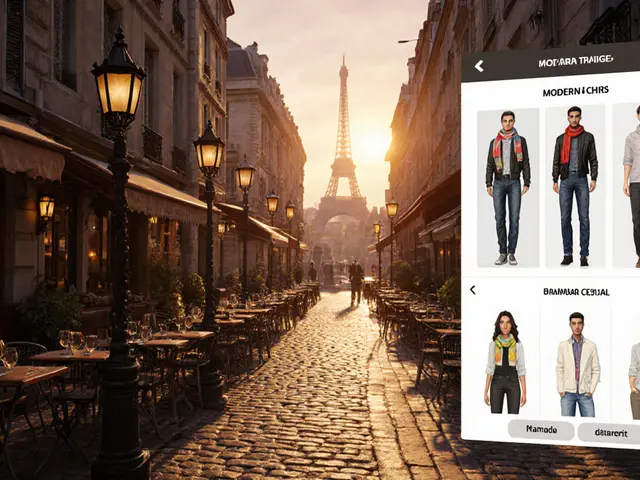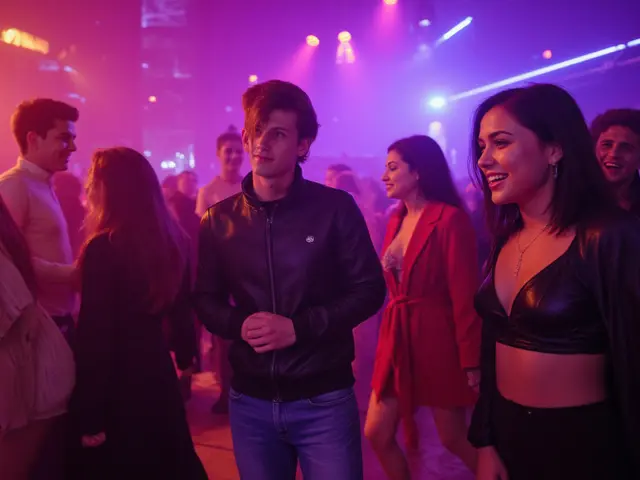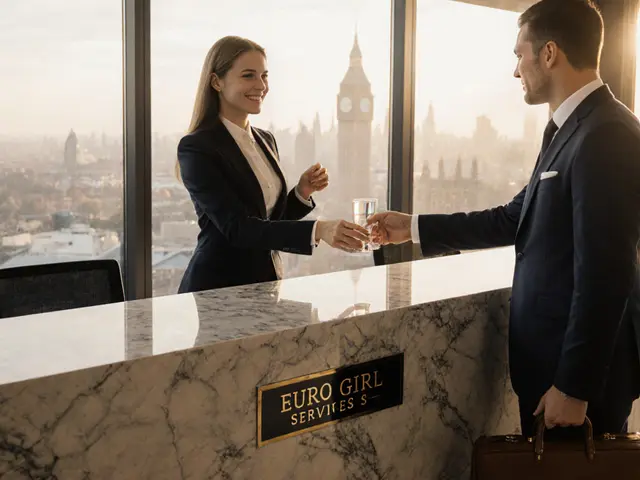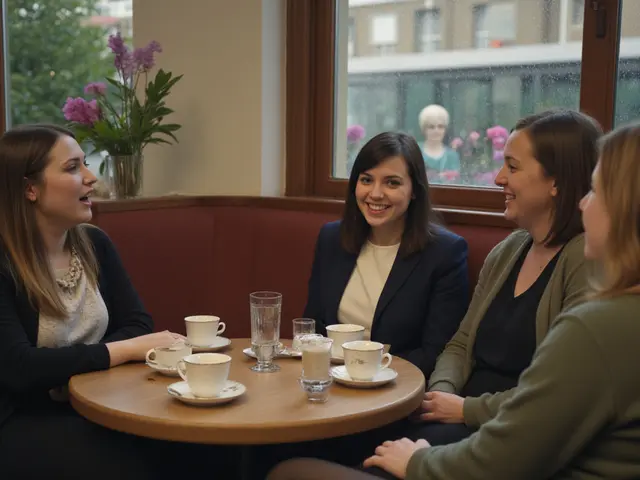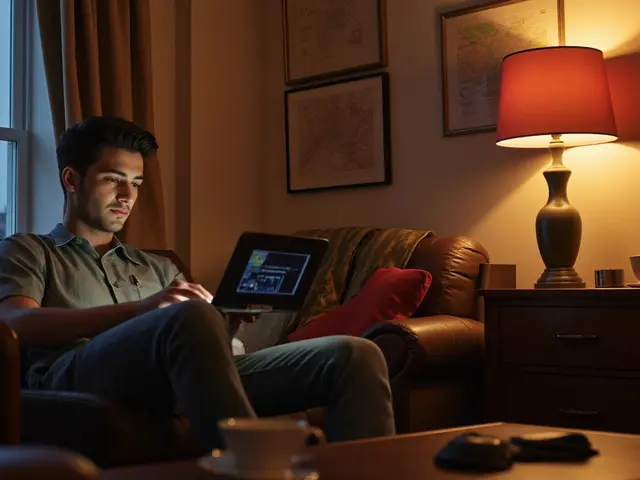The city after dark doesn’t resemble its daylight self at all. Those rainy sidewalks reflect neon billboards, centuries-old bridges light up like movie sets, and the river turns into a glossy mirror for the traffic above. It’s honestly wild how London’s skyline morphs every time streetlamps flicker on. And somehow, you’re not the only one who senses that magic; photographers have flocked here for decades, lured by that mix of history and modern sparkle. But here’s the thing—these nights aren’t just for pros with bags of lenses. With some know-how and patience, anybody can capture shots that look straight out of a gallery.
Chasing the Best Shots: Night Photography Locations in London
Some spots in London stand out as absolute essentials for London night photography. Start at the Thames. Seriously, its banks double as the front row for the city’s light show every evening. Stand on Waterloo Bridge and you’ll get the London Eye spinning in one direction and the old turrets of the city in the other. Wander east and you'll hit Tower Bridge, which glows with thousands of LEDs—if you time it right, you can snag a riverboat cruising underneath, and it adds a dynamic lift to nighttime shots.
Another not-so-secret gem is the Southbank. From sunset until midnight, the riverside walkway overflows with performers, fluorescent market stalls, and the occasional skater showing off tricks. Every pocket of this area pops with color, and the lights reflecting off the Thames can turn puddles into glittering foregrounds. Take the walk towards St. Paul’s and you’ll spot the Millennium Bridge. It frames the cathedral under a hazy sky that sometimes even turns violet. For that iconic shot of London’s old-meets-new vibe, this is your place.
If you want drama, head to Canary Wharf. The tall glass towers light up like circuit boards, and the reflections on any canal or wet pavement double your visual punch. Trafalgar Square brings a moodier feel; the stone lions, fountains, and the National Gallery get bathed in soft yellow light, which makes long exposures here look like Renaissance paintings.
Let’s not ignore the West End. Eros statue at Piccadilly Circus becomes a beacon for every billboard, and the night buses streak by in red lines if you go for a longer shutter speed. Chinatown explodes in red and gold: think paper lanterns tangled overhead, shop signs in neon, and bouncing light from the wet cobbles. Carnaby Street—even at midnight—offers tie-dye color from installations and walls that, somehow, look better soaked than dry.
Don’t discount the simple alleyways behind the big sights. Photographers can find fortune in the shadows—think of ambient-lit pubs in Soho or tiny blue-lit windows in Notting Hill’s quieter corners. Sometimes, turning away from the landmark gets you a shot nobody else has found.
To help you plan, check out this data table of a few hotspots and their daily foot traffic (hourly averages) at night—handy for both safety and solitude:
| Location | Best Hour for Shots | Nighttime Hourly Foot Traffic (avg.) |
|---|---|---|
| Waterloo Bridge | 9–10 PM | 800 |
| Southbank (near London Eye) | 10–11 PM | 1,200 |
| Tower Bridge | 10–11 PM | 700 |
| Canary Wharf | 8–9 PM | 350 |
| Trafalgar Square | 9–10 PM | 600 |
| Piccadilly Circus | 11 PM–12 AM | 1,800 |
So if dodging crowds matters, aim for Canary Wharf or those riverbanks east of the big attractions after 8 PM. Night owls with patience for lively backgrounds? Piccadilly and Southbank hit their stride late.
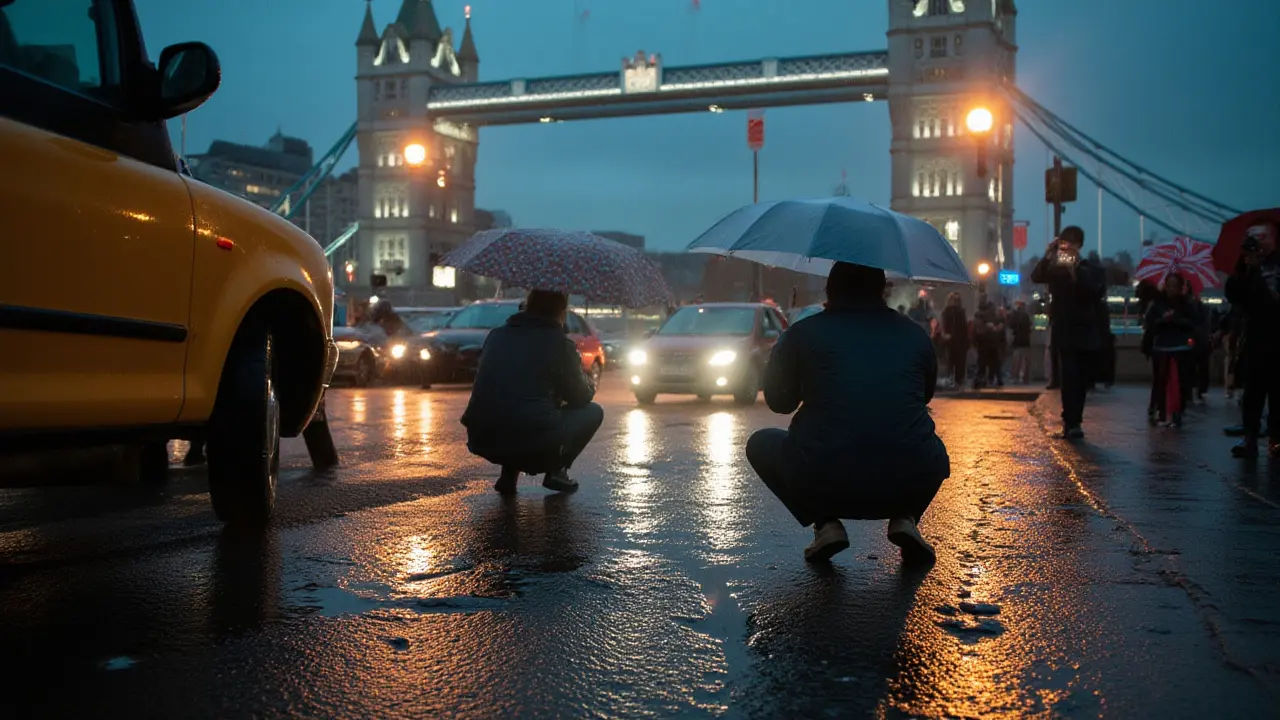
Mastering London’s Light: Tips and Tricks for the Perfect Night Shot
If you’re going to shoot London at night, the very first rule: leave the flash at home. The city gives off its own mood. Artificial light is harsh, and all those lamps, bulbs, and neon signs will do more interesting things than any gadget attached to your camera could. Instead, get to know your manual settings. For beginners, try Aperture Priority or Shutter Priority mode rather than full Auto—the camera shouldn’t decide how you capture magic.
Tweak the ISO according to your camera's limits. In London’s city center, plenty of lights allow for a lower ISO, but in darker, old streets or unlit alleys you might need to bump it up. Beware, though—past 1600 ISO, most cameras start looking grainy. If your camera can take it, stick to 800–1600. When possible, set the aperture somewhere between f/5.6 and f/11 for street scenes, so you can keep details in both bright lights and night sky without things turning blurry or soft. For moody portraits or single-object shots, a wider aperture lets background lights blur into dreamy circles (‘bokeh’ for the jargon folks).
Tripods aren’t optional. Even tiny movements ruin that pin-sharp clarity. There’s a reason you see so many photogs clutching little gorilla pods or finding clever ledges—the best night photos come from total stillness. The good news? You can make do with whatever fits your bag; even a rolled-up jacket or park bench works in a pinch.
Play with shutter speeds. London’s iconic double-decker buses become red blurs at two to five seconds exposure, and people streak gently into ghosts if they wander through your shot at similar times. Experiment with one-second or longer exposures on water, especially anywhere along the Thames, and those choppy ripples turn into a silky blanket under the bridges and boats.
Watch out for lens flares—those odd halos or starbursts. Sometimes it fits (like when Big Ben glows at just the right angle), but most of the time, they’re a nuisance. Use a lens hood if you have one, or just shield the lens with your hand. And always clean your lens before heading out—city grime has a sneaky way of blurring or multiplying streetlights in your shot. Smudges look even worse at night.
Another trick: use self-timer or a remote shutter if you’ve gone the tripod route. Even just pushing the button with your finger can wobble the camera and ruin a long exposure. If your camera allows, play with bracketing so you can blend different exposures later—London’s Sir Giles Gilbert Scott designed Battersea Power Station, which lights up in twenty shades at night, and bracketing lets you capture that full range from brightest neon to darkest shadows without losing details in either.
Rain? It’s honestly your friend. Wet pavements double light and make everything brighter. If you can handle having slightly wet feet, those post-shower evenings mean your photos will look almost electric where dry nights look flat. Bring a cloth to wipe your lens if it’s drizzling, and don’t shy away from puddles—they turn into mirrors for taxi cabs, umbrellas, and street signs in ways you’ll grow to crave.
Last, don't ignore safety. Some areas look fantastic on film but feel lonely late at night. Stick to streets with other people, let a friend know where you’re shooting, and stash your camera if you sense trouble. London police do patrol main spots, but it always pays to be mindful—especially if you’re staring into a viewfinder for long periods.
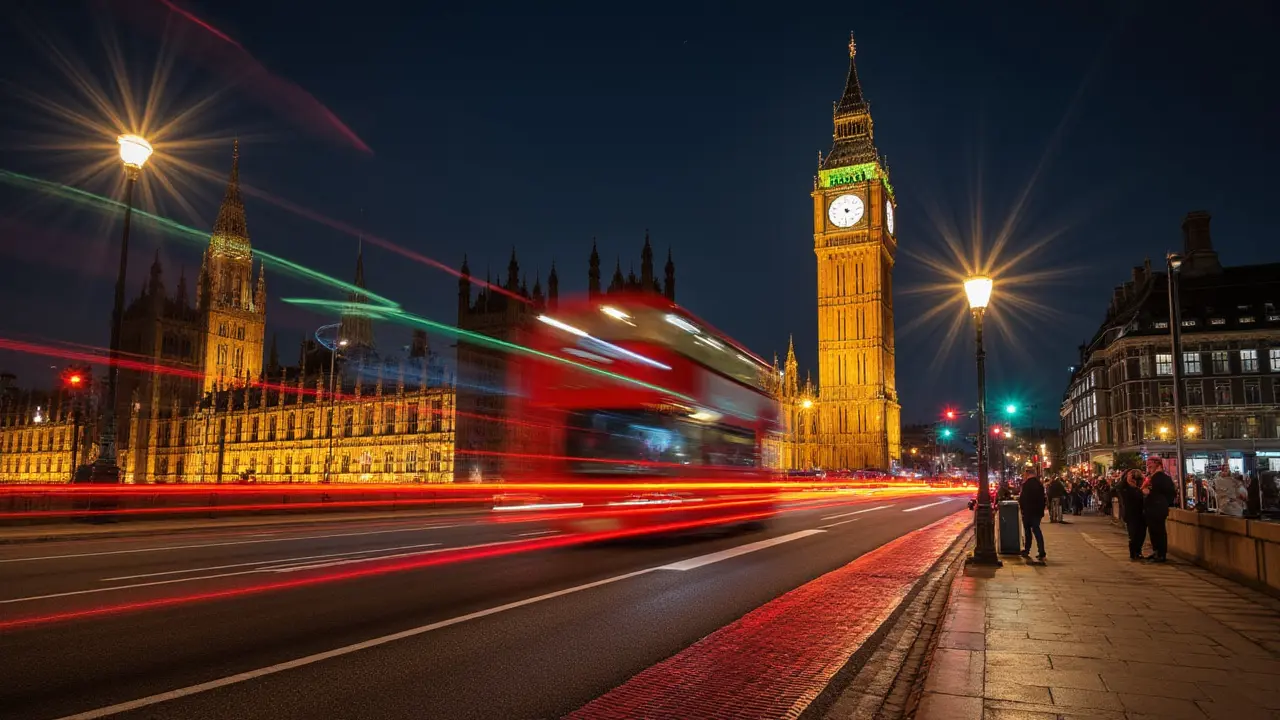
Beyond the Lens: Stories, Serendipity, and Community in London Night Photography
Anyone who’s spent a few nights wandering with a camera in this city learns that the perfect photo is never just about the settings and the scene. What you see in your lens changes fast—sometimes in the blink of red light on wet tarmac or a sudden laugh from a passing stranger. Street photography at night is half patience, half luck. Maybe you catch a couple kissing beneath the glow of Big Ben, or you find a fox darting past a silent Underground station. When you’re not rushing, these moments sneak into your shots and give them life.
London at night can seem lonely, but the reality is, the photography scene here is anything but. Stroll Southbank after sunset and you’ll spot clusters of shooters swapping stories and tips. There’s a whole network of meetups for night photographers, from Instagram walks to photo clubs based out of quirky coffee shops. The more you join in, the more you pick up little local secrets—like where security won’t bother you setting up a tripod, or which rooftop you can actually access with the right wink and a smile to the doorman.
Spent time with the old hands, and you’ll quickly hear about classic tales: like the time the power went out in Piccadilly and everyone scrambled for the “once-in-a-lifetime” blackout shot, or the year when the Thames froze just enough to reflect Tower Bridge ice-level. Most agree that rainy nights on Oxford Street produce better street photos than sunny days—each puddle reflecting the lights of dozens of wild shop windows.
This is a city where every night attracts both tourists chasing postcard London and locals finding something new to love in their own backyard. Looking for inspiration? Peek at the work of photographers like Martin Parr, who snapped neon-soaked street scenes long before Instagram filters were ever a thing. His images catch the candid, messy, joyful chaos unique to London after dark.
And don’t forget, with tech in your pocket, you don’t need the fanciest camera to get started. Many stop-and-shoot labs around Soho still process film shot at night, but just as many great shots are snapped with phones. What counts is seeing things differently: chasing shadows on Regent Street, spotting the one tired commuter asleep under swirling lights, or catching the silent delivery guy crossing London Bridge at midnight. Whether in color or black-and-white, London at night is a canvas, and every person out there with a camera leaves their mark.
Bored of the same angles other photographers use? Try climbing higher: many city hotels will let you up to rooftop bars with a side order, and from there, you’ll see the city’s sprawl in glimmering grids. Or go low—shoot through the spokes of fences, or reflections in sunglasses of someone gazing at the skyline. And every December, a different part of the city hosts massive light exhibits (like Canary Wharf’s Winter Lights Festival), bringing new backdrops for month after month.
The trick is not just finding the right settings or beating the rain. You need an eye for the real story. That’s why London keeps luring photographers year after year: it doesn’t just change with the weather—it reinvents itself every night. One thing’s for sure, if you spend a few evenings chasing shots out here, you’ll leave with a gallery and a head packed with stories worth sharing.

